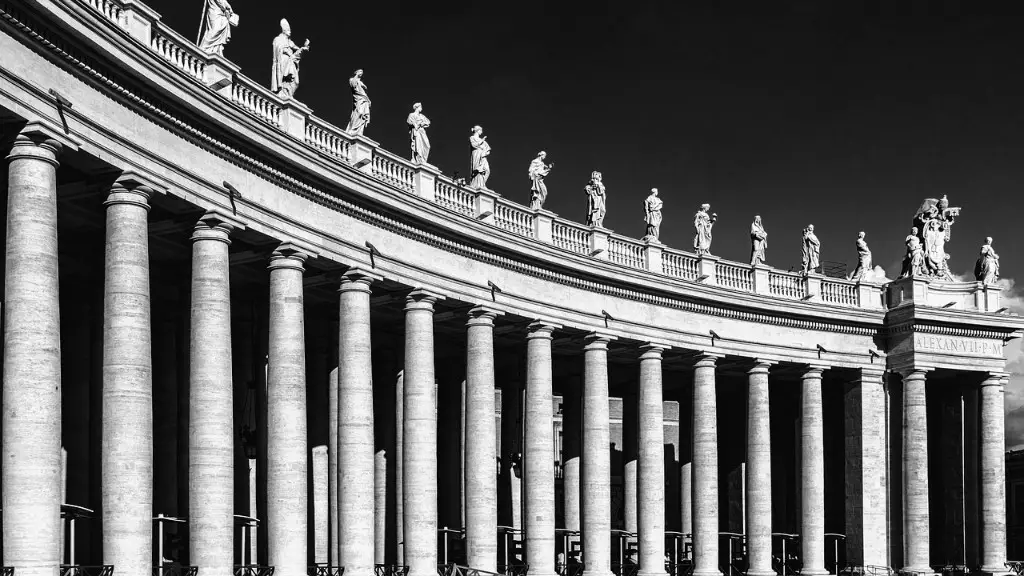What Would Ancient Romans and Greeks Wear? Ancient Roman and Greek fashion and clothing has always intrigued and captivated people since time immemorial. People today have wondered what the ancient Romans and Greeks wore and have tried to recreate their look. It is believed that the clothing of the ancient Romans and Greeks was part of their culture, and helped them to identify themselves within society. It is also thought that the way they dressed was an expression of their beliefs and values.
Clothing in the ancient world was usually made from natural materials like wool, linen and cotton. Ancient Romans and Greeks wore clothing tailored to the hot climate of the Mediterranean region. Men would typically wear a tunic which was a short-sleeved shirt with a belt, or shorter for summer and would usually be made of wool. The tunic reached mid-calf and resembled a dress. Women typically wore longer chitons, which was a sleeveless garment with a length of between the ankles and knees. Over this they would wear a heavier mantle, which was like a cloak.
It was common for wealthier people to have clothing made of finer materials such as silk, which was imported from India and Persia. It was also rare for both men and women of this class to wear jewelry and not just make-up. For example, women would typically adorn their garments with accessories like studs, brooches and necklaces. Jewels were mostly used to decorate dresses made of silk. Colours were also important as the wealthy would differentiate themselves from the lower classes by wearing clothes with purple or scarlet.
The ancient Romans and Greeks also used colours to identify themselves within society, such as the dark blue worn by Roman patricians and senators. In the Greek world, there were also differences between the clothing of the rich, middle and lower classes. For example, the poor would typically wear much simpler clothes, often in dull colours and plain fabrics, whereas those of a higher status would generally have clothing with brighter colours and more embellishments.
It was also common for ancient Romans and Greeks to wear masks or veils when leaving the house. This was particularly true for women, who often wore head coverings to cover their face and hair as a sign of modesty. This also helped to differentiate between social classes as women from higher-status families were more likely to cover their faces than those from lower-status families.
Footwear was also a mark of status amongst the ancient Romans and Greeks. While the lower classes wore sandals, the wealthy and elite often wore shoes made of leather or sandalwood. Shoes could also be decorated with jewels or other adornments and could be coloured to match clothing. In some cases, footwear could be highly elaborate and even have goldwork incorporated.
As can be seen, clothing was an important factor in the lives of the ancient Romans and Greeks and was used to express their status in society. It is clear that clothing was a symbol of power and the differences between social classes were clearly visible through the materials, colours and styles of clothing.
How Clothing was used in Ancient Cultures
In ancient times, clothing was not just used for practical reasons but was also a symbol of one’s social status. It was an important factor in the lives of the ancient Romans and Greeks and was used to express their rank in society. Clothing was also a way for individuals to assert their identity and to show off their wealth and position. For example, the wealthy would dress in elaborate and brightly coloured garments, while those of lower-status would wear simpler and plainer clothes.
Clothing was also used to denote political and religious affiliation. The ancient Romans, for example, were required to wear a certain type of clothing when entering the Senate in order to show their allegiance to the Roman Republic. In the Greek world, clothing was used as a way of distinguishing between upper- and lower-class citizens, with the upper-class citizens often wearing expensive and elaborate clothing.
The use of masks or veils was also a common practice in ancient cultures. Both men and women would often wear a face covering in order to protect themselves from the elements. In some cases, masks or veils were also used to maintain secrecy in certain situations or to hide one’s identity. In ancient Rome, for example, it was customary for women to wear veils when leaving their homes.
In addition to clothing, the ancient Romans and Greeks also used jewelry to distinguish their status. Jewelry was often made of precious metals and stones, and was used to indicate wealth and power. Women would typically adorn their garments with accessories like studs, brooches and necklaces, while men would typically wear rings, bracelets and arm bands.
The ancient Romans and Greeks also had a strong belief in the power of symbols. Clothing, jewelry and masks were all used to portray certain ideas and beliefs, from political ideologies to religious affiliations. By wearing certain items of clothing, the ancient Romans and Greeks were able to express their beliefs and show their status within society.
Forms of Dress for Celebrations
In addition to everyday clothing, the ancient Romans and Greeks also had specific forms of dress for specific occasions or celebrations. These styles were often more elaborate, ornate or luxurious than everyday clothing and were usually only worn for special events. For example, women often wore long, flowing and heavily embellished dresses for major celebrations.
Men would commonly wear tunics that reached their mid-calf and were often decorated with embroidery or beading to signify a special occasion. For more formal occasions, men would often wear more sophisticated outfits such as the toga, a long, heavy and draped garment. The toga was worn by both men and women and was often made of silk or wool. It was believed that wearing a toga was a sign of respect and could signify one’s political or religious status.
In addition to clothing, the ancient Romans and Greeks would also use accessories to complete their look. These could include items such as sandals, headdresses, wreaths, jewellery and even makeup. Accessories were often used to signify particular religious or political beliefs. Hair in particular was a symbol of power and was often worn by both men and women to show off their rank, class and social status.
The clothing and accessories of the ancient Romans and Greeks were an important part of their culture and were used to express their rank, beliefs and values. Clothing was also used to indicate one’s position within society and to portray certain ideas and affiliations. The range of attire and accessories that were used by the ancient Romans and Greeks was vast and was a unique form of self-expression.
Conclusion
The ancient Romans and Greeks used clothing to denote their social standing and to express their beliefs and values. It was an important factor in their lives, and the materials, colours and styles of clothing were all used to differentiate between social classes. Clothing was also used to signify political and religious affiliations, and in some cases masks or veils were also used to protect one’s identity. Accessories such as sandals, headdresses and jewellery were also commonly worn and were often used to indicate status.
Ancient Roman and Greek fashion and clothing is still admired and replicated today, and people are continually drawn to these styles due to their beauty and complexity. It is clear that clothing was a strong symbol of power in the ancient world and still plays an important role in our lives today.




